What’s the best way to keep black spot off your roses? Choose disease-resistant roses that have a proven track record of fighting off fungal diseases and being resistant to black spot.
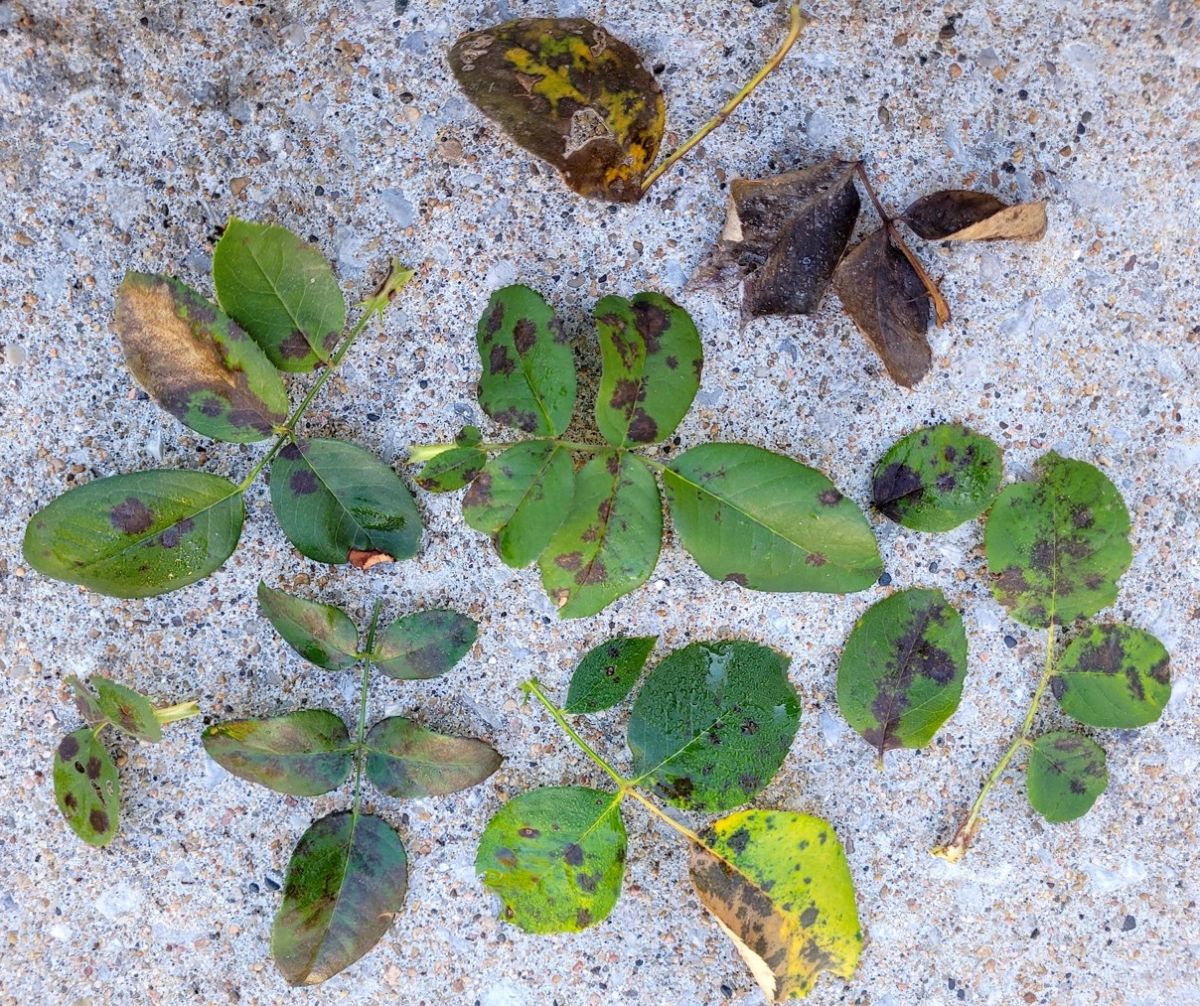
Even when the weather has been warm, rainy, and humid for weeks, these trouble-free roses keep their foliage clean and green and are unfazed by fungal diseases.
Jump to:
What is Blackspot?
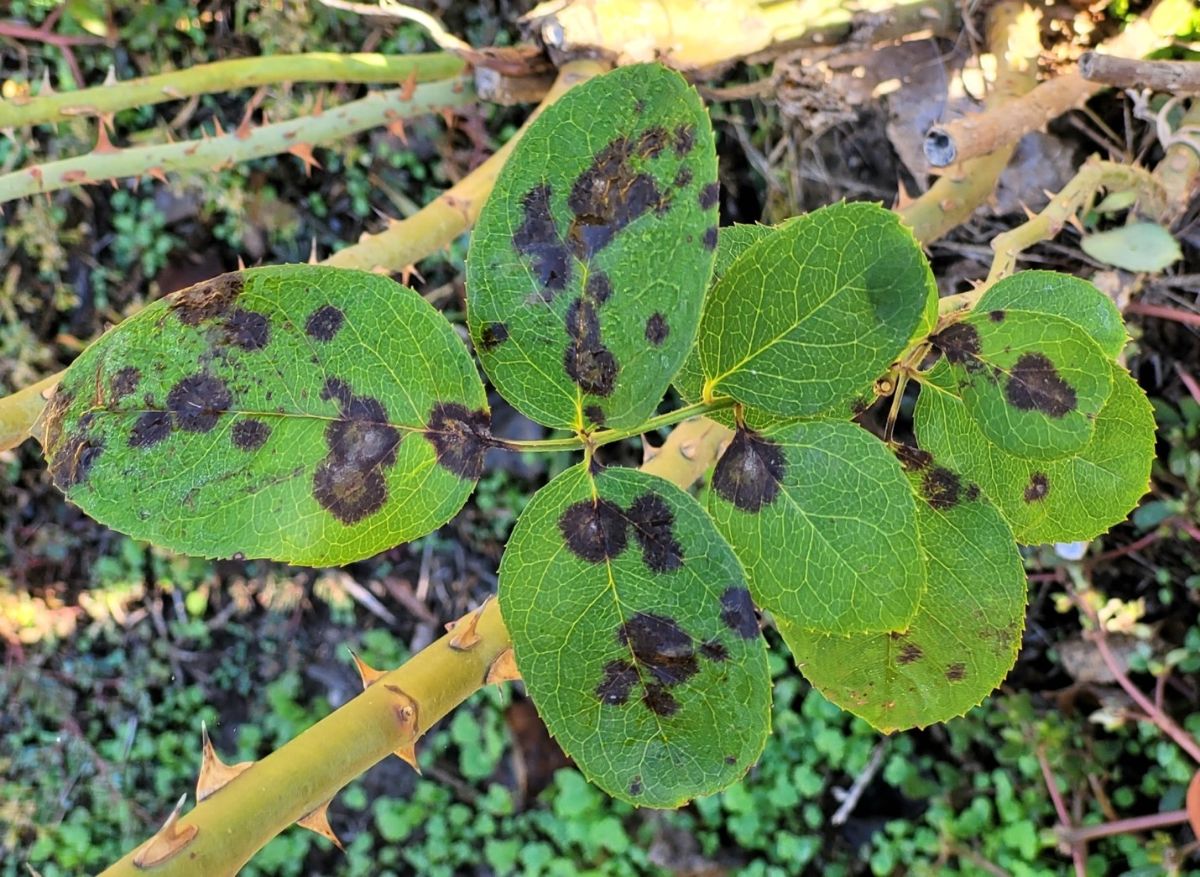
Blackspot is one of the most common fungal diseases that affects roses. When the weather stays rainy, humid, and warm for a long period of time, black spot spores germinate on the tops of rose leaves, penetrate the surface cells of the leaf, and live there. The black spot fungus makes black or purple blotches on the rose leaf, which then puts out more spores and continues the cycle.
A rose that’s badly affected by black spot will have all its leaves fall off, leaving only sad, skinny stems. This doesn’t kill the rose, but it’s weakened and is more susceptible to other diseases that might kill it off.
Choosing black spot-resistant roses can make things much easier for you.
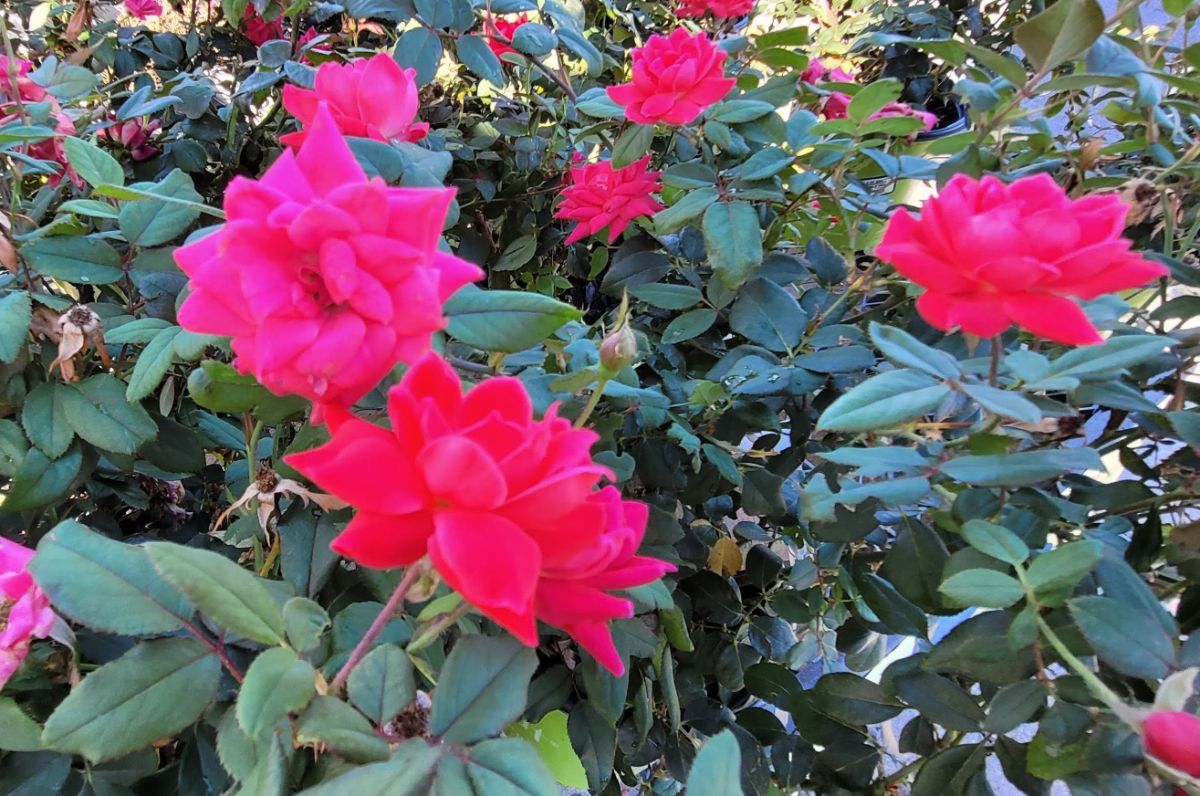
Knock Out (2000) is the ultimate in trouble-free roses.
These days, you can see Knock Out roses everywhere – in landscapes, in garden beds, along sidewalks, anyplace where a little color is needed.
Knock Out roses have a unique story.
The rose breeder who came up with Knock Out, William Radler, had started breeding roses in 1974, actively seeking repeat-blooming, cold-hardy, disease-resistant roses.
To test the disease resistance of the roses, Radler would run rose leaves infected with black spot and powdery mildew through the blender, then spray them on his roses to spread pathogens. Then, he would winnow out the diseased roses until only the most disease-resistant remained. One of those roses turned out to be Knock Out.
Knock Out roses have amazing black spot resistance. They form an attractive, dense bush that doesn’t need pruning. Its cheerful, cherry-red blooms keep blooming all through the growing season. Dead blooms simply fall off – no deadheading required. Blackspot and powdery mildew bounce off the glossy green leaves without leaving a dent.
And this rose seriously looks good.
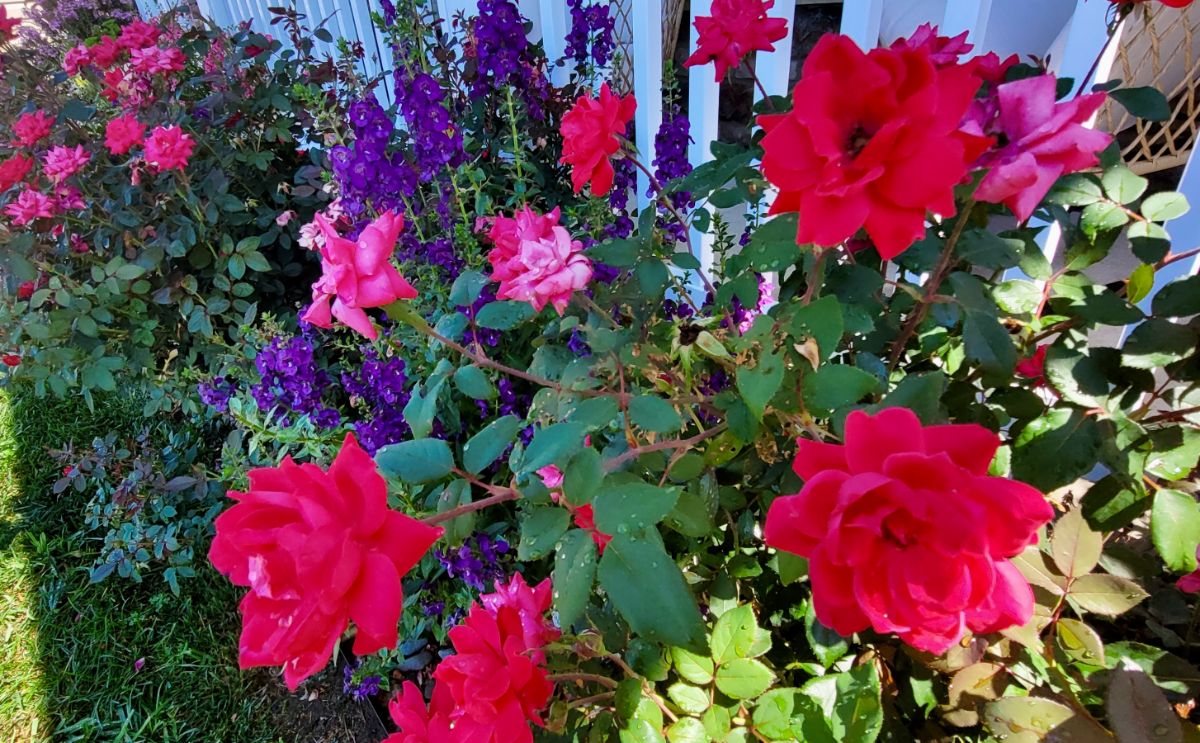
Knock Out roses proved to be insanely popular.
The Peace Rose, which became one of the world’s most popular and well-known roses, has sold 100 million plants over 47 years.
The Knock Out rose sold over 150 million roses in 20 years.
The Knock Out family of roses sparked a much-needed revolution in rose breeding, turning many breeders toward breeding hardy, disease-resistant roses that people love. There are now 11 varieties of Knock Out roses on the market, along with many other new disease-resistant roses coming out from other breeders.

Golden Fairy Tale (1995) was also sold under the name Sterntaler. This rose is categorized as a hybrid tea rose, but don’t let that designation fool you. This ironclad rose doesn’t need coddling.
Once it gets established, Golden Fairy Tale grows into a vigorous landscape shrub rose from 3 to 5 feet tall, bearing huge clusters of cheerful yellow roses that resemble old-fashioned antique blooms. Each flower is over 4 inches wide and lasts for a long time. The shrub is a fast repeat bloomer and keeps bringing on more flowers.
Even though yellow roses have traditionally been magnets for black spot, the semi-glossy foliage on this rose resists black spot, mildew, and many other diseases.
If you want a beautiful rose that’s also bulletproof and can withstand almost anything that’s thrown at it, go with Golden Fairy Tale.
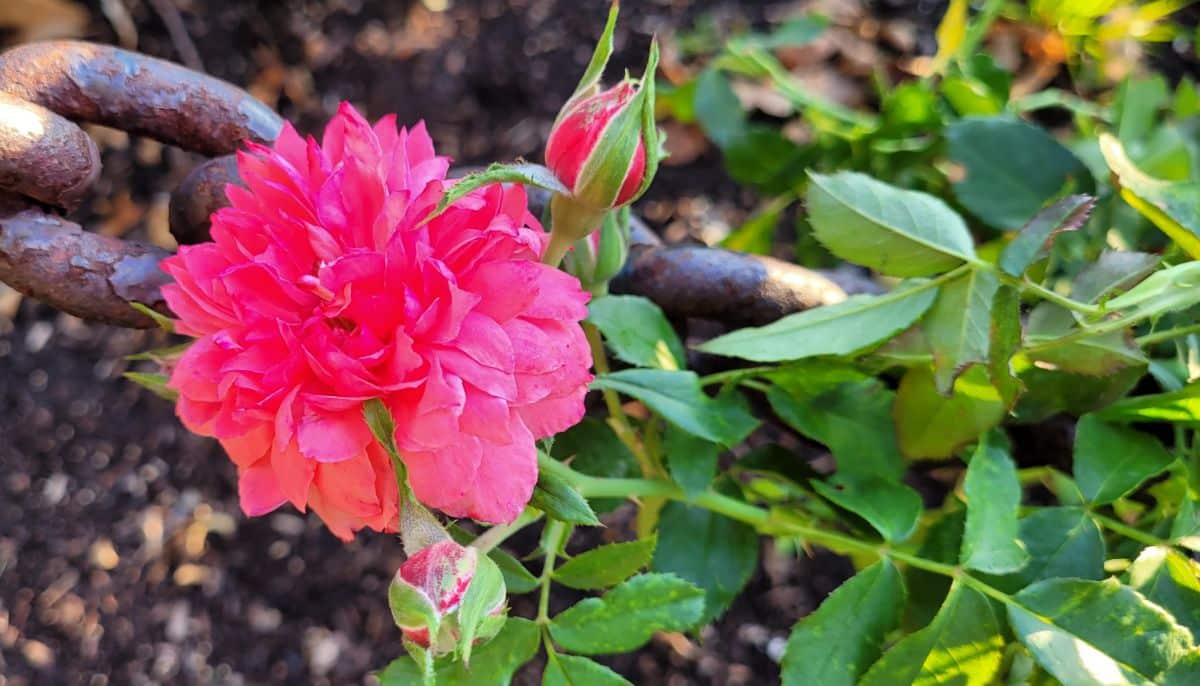
Rosarium Uetersen (1977), named for a famous rosarium in Germany, is a fast-growing climbing rose. It is resistant to black spot and other diseases, even in cold, wet weather. It also grows well in poor soil. It has super-shiny leaves and vibrant sprays of coral flowers the size of your palm.
This rose is a vigorous grower that can grow 6 feet tall in only five months! Since it is a climber, it will need support as soon as it’s planted because it will grow sideways before it grows upward.
The flower colors change between coral to pink, and they will turn lighter or darker depending on the climate. Once Rosarium Uetersen gets established, it will put on a striking display of coral blossoms.
The flowers have little to no fragrance, unfortunately, but the rose completely covers itself with clusters of flowers the size of your palm, and there are so many of them that the rose droops under their weight (another reason it needs support right from the start).
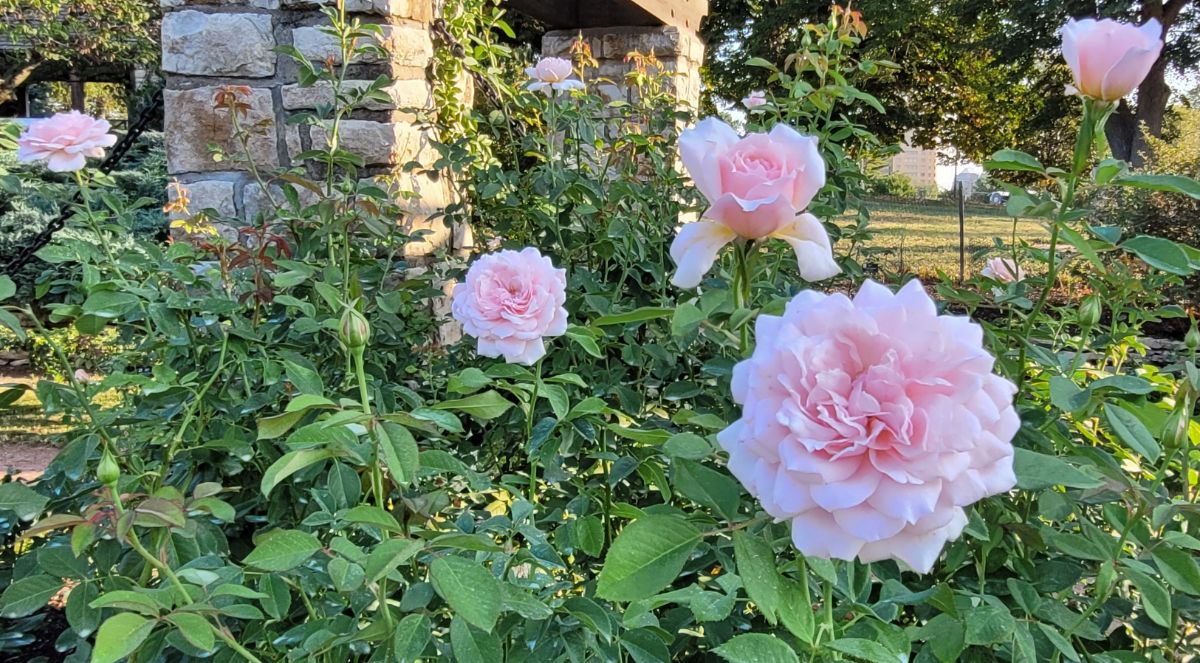
Quietness (2003) is one of the last roses bred by Dr. Griffith J. Buck, a professor at Iowa State University. He was known for breeding excellent roses that were clean, disease-resistant, able to withstand temperature extremes, and easy to grow.
Quietness is grown on its own roots and bears blossoms that are shell pink, softening toward white on its outer petals. Outstanding repeat bloom through the season. The flowers are huge, and their fragrance ranges from light to relatively strong. In a vase, the cut flowers last for up to 5 days.
The plant is upright, growing 5 to 6 feet tall, though sometimes it can get up to 7 to 8 feet tall and 5 feet wide.
Quietness is very black spot resistant. It is resistant to botrytis, blight, and thrips, too, so it’s a great rose to have in a no-spray rose garden.
Quietness is named for the silence in the air after 9/11.
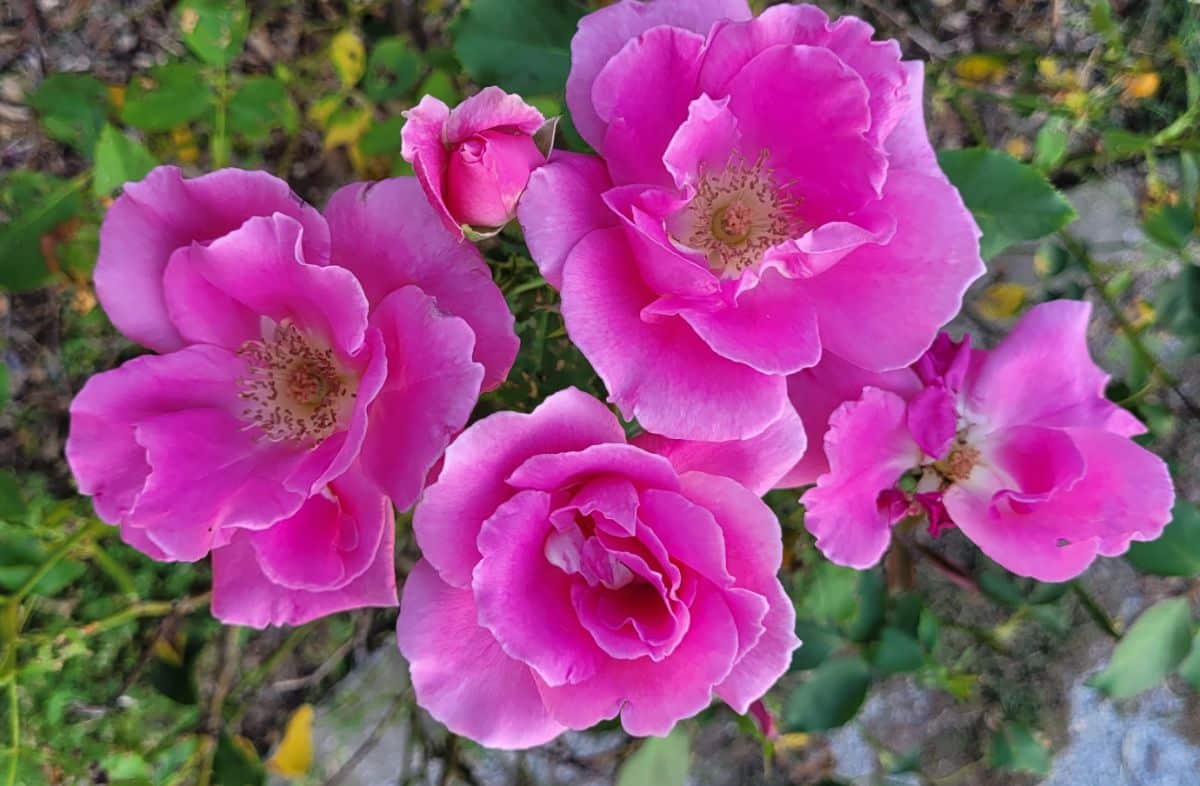
Carefree Beauty (1977) is another trouble-free Buck rose that was bred for many of the same reason as his other roses – disease resistance, excellent hardiness, generous blossoms, and fragrance.
Carefree Beauty roses were already growing in the Krug Park rose garden when I started working there, and they proved to me that disease-resistant and carefree roses actually did exist. All I had to do with them was crawl under them and cut out the old, dead canes once a year.
I didn’t even spray them, and I didn’t give them the big pile of mulch in early winter that the other roses received. They simply didn’t need it.
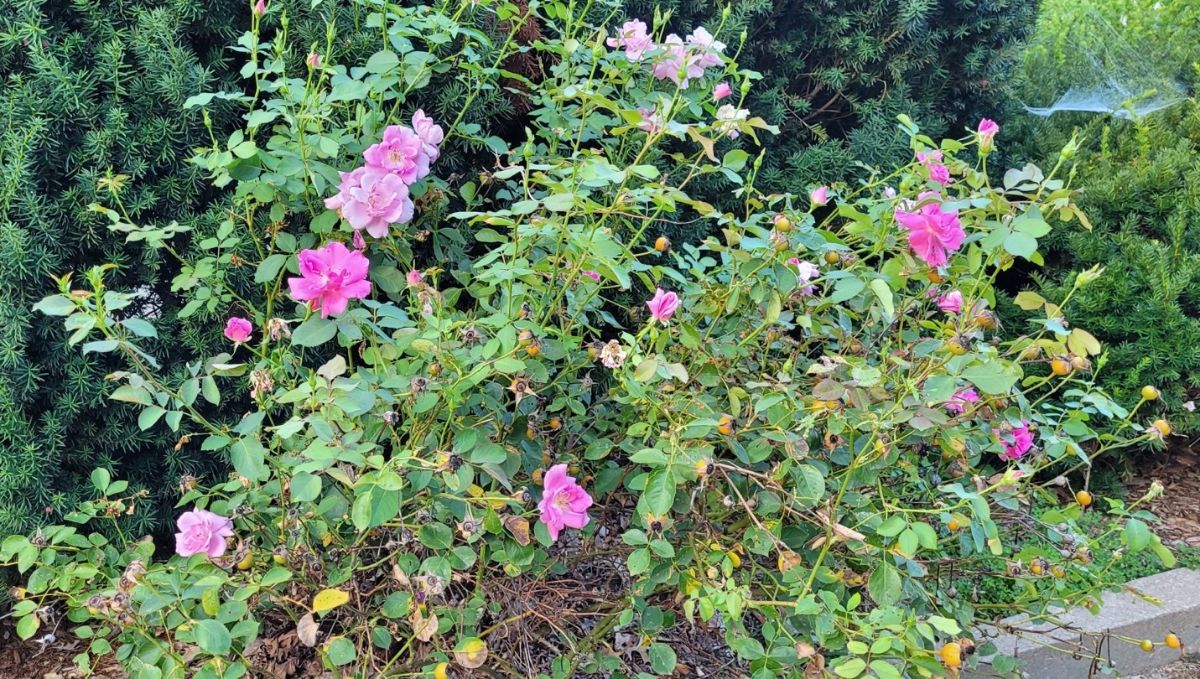
Carefree Beauty is a sweetly scented rose with large, dark pink blossoms that fade to a lighter pink with age, and it covers itself with flowers all through the growing season.
Carefree Beauty is a shrub that grows about 5 feet tall and wide with glossy, flat leaves. This rose is outstanding in terms of disease resistance, beauty, vigor, and hardiness. If you want a rose that you can plunk into the ground and let it grow, it’s Carefree Beauty.
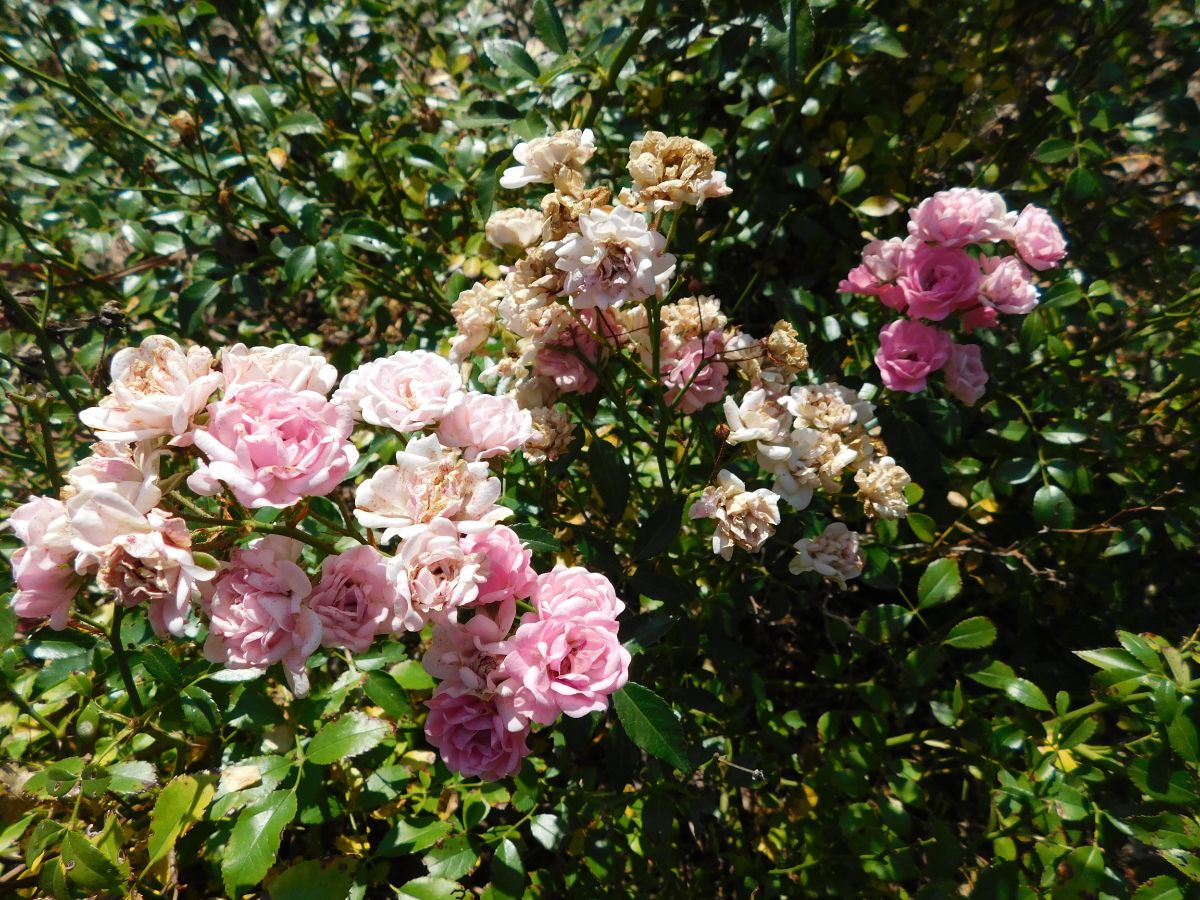
The Fairy (1932) is a dwarf polyantha rose that covers itself with small, white and pink flowers. It’s a good-natured little shrub with bright, glossy foliage that resists blackspot and other diseases. The Fairy was also designated as an Earth Kind rose, which is a super-hardy rose that flourishes even without fertilizers, pesticides, and fungicides.
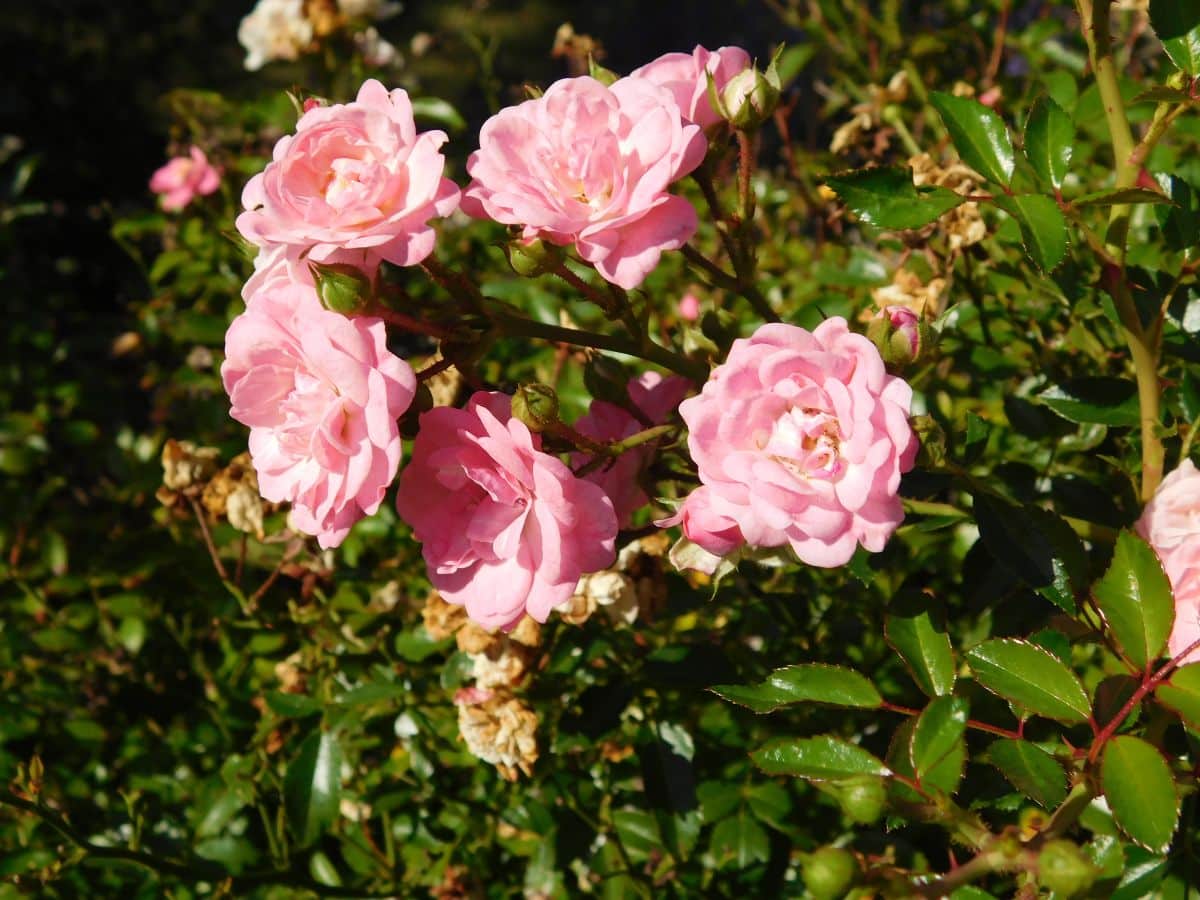
The Fairy grows 2 to 4 feet tall and wide but can grow even larger with good care. You can drape her along a fence, and she’ll ramble on along its length. The Fairy can also be a compact, shade-tolerant rose. This rose provides continuous bloom throughout the season, even during drought.
The coral-pink and white flowers are extremely charming, and the cut sprays make a lovely arrangement in a vase.
The Fairy is a very forgiving rose. Yes, her little thorns are vicious! But she’ll bloom in whatever terrible soil you put her in; she’ll bloom whether she’s watered or not. You can forget to put winter protection on her, and she’ll pop up in spring despite that, all ready to bloom again.
The Fairy isn’t a flashy rose, but she’s reliable and lovely, and she’ll be a valuable part of your garden.
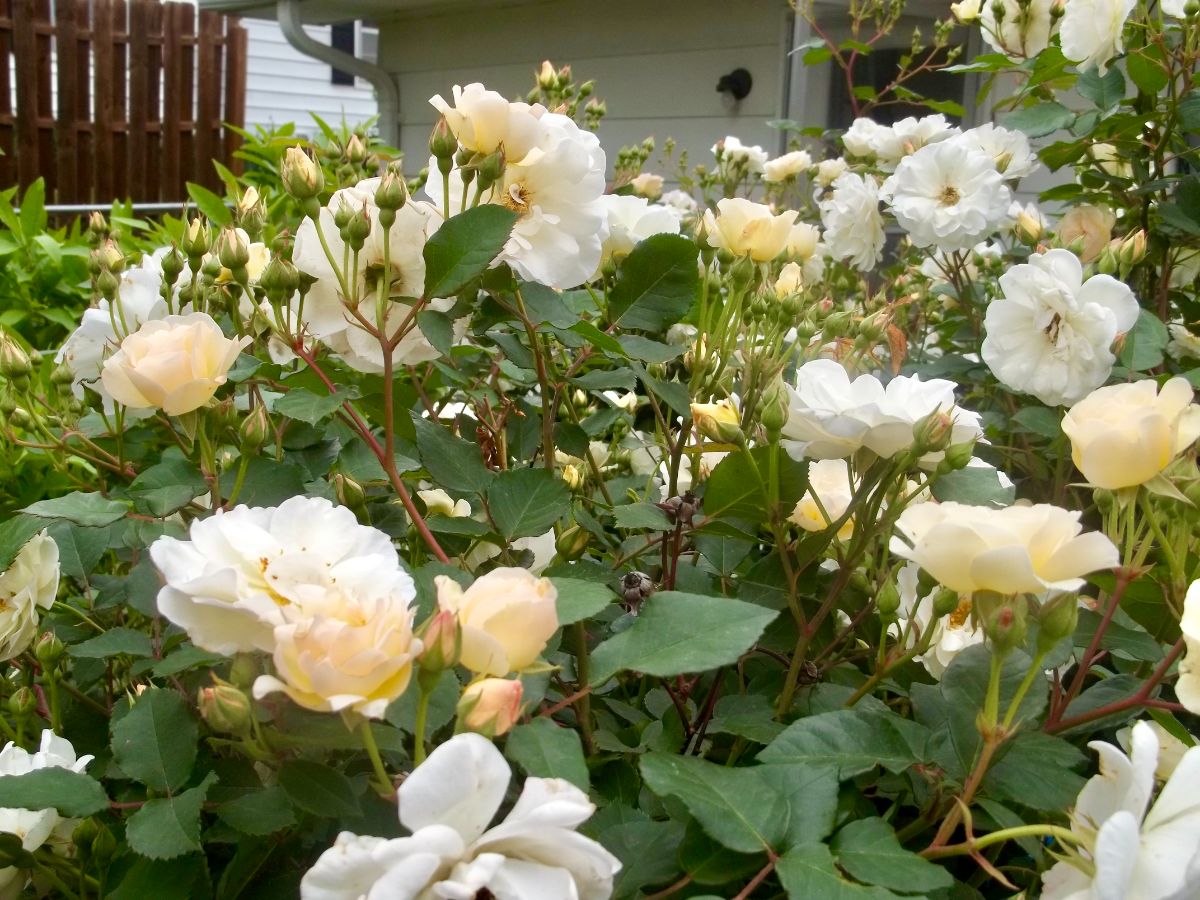
Penelope (1924) is a hybrid musk rose that is great at resisting blackspot along with a host of other afflictions.
The flowers have a soft, apple-like fragrance. Their creamy yellow-pink buds open to yellow-orange flowers, then fade to white.
I am ashamed to say that I utterly neglected this rose for several years when I pretty much stopped gardening altogether and ignored my plants. I have two Penelope roses, and without being watered and fed and weeded, they became sad-looking and puny, like Captain America before he got the super serum. Then, the Japanese beetles would swarm in and eat them to shreds every summer.
And yet, in fall, the Penelope roses would come back with new growth and start blooming again, and they still looked good.
This year, all I did was give them mulch, keep them weeded, and occasionally watered them. In response, they grew much taller than usual and blossomed. They got a little black spot this spring, but only on a few leaves, and those leaves ended up being skeletonized by the Japanese beetles anyway, so it was no biggie. The leaves that grew back afterward were big and shiny green, with absolutely no black spot or other diseases.
Penelope is just a good rose to have if you’re not always able to be outside to take care of her.
Look to Local Roses for Best Results

A rose that holds its own in the drought and wind of the Midwest might turn into a puddle of blight in the United Kingdom.
If a rose doesn’t work in your climate to repel blackspot, that’s okay. There are plenty of other fish in the sea – or roses in the garden.
Your best bet is to find locally grown roses that stay free of black spot without being sprayed. When you see a rose that’s thriving in your area, inquire about it and learn more about it.
Being able to actually see how roses respond to your climate, soil, and conditions goes a long way toward choosing a solid, blackspot-resistant rose – especially if you live in a warm, extremely humid area where black spot runs rampant.
Other Black Spot Resistant Roses That Are Worthy
The roses sold at Antique Rose Emporium are very resistant to black spot. The roses sold here got their starts as old roses collected from abandoned homesteads and cemeteries. These roses have grown unattended for decades but still thrived.
Here’s a list of other great roses that are not susceptible to black spot.
Francis Meilland
Boule de Neige
Talisman
White Cap
Tiffany
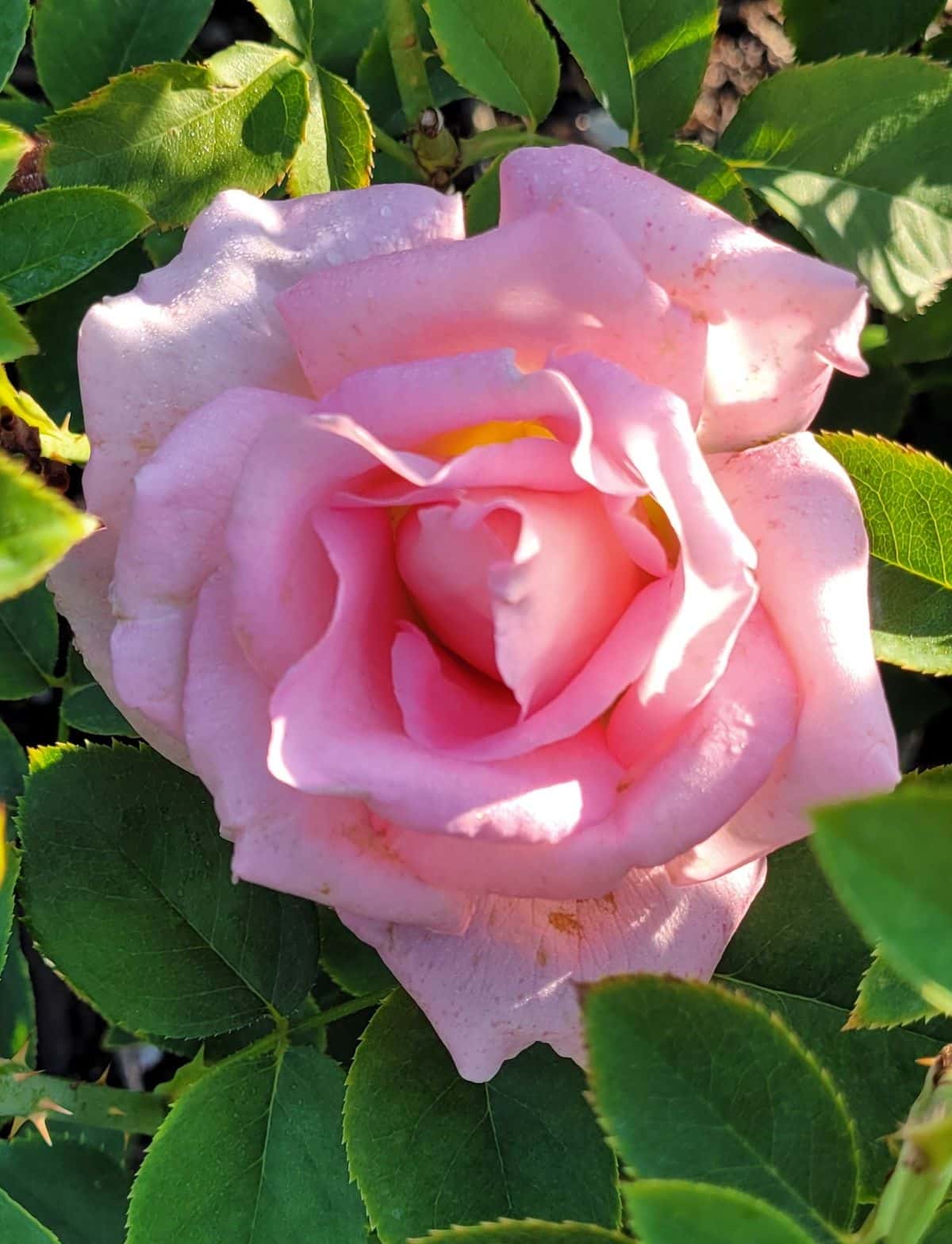
Cream Veranda
Poseidon
Dark Desire
Eden
Grand Amore
Summer Sun
Munstead Wood
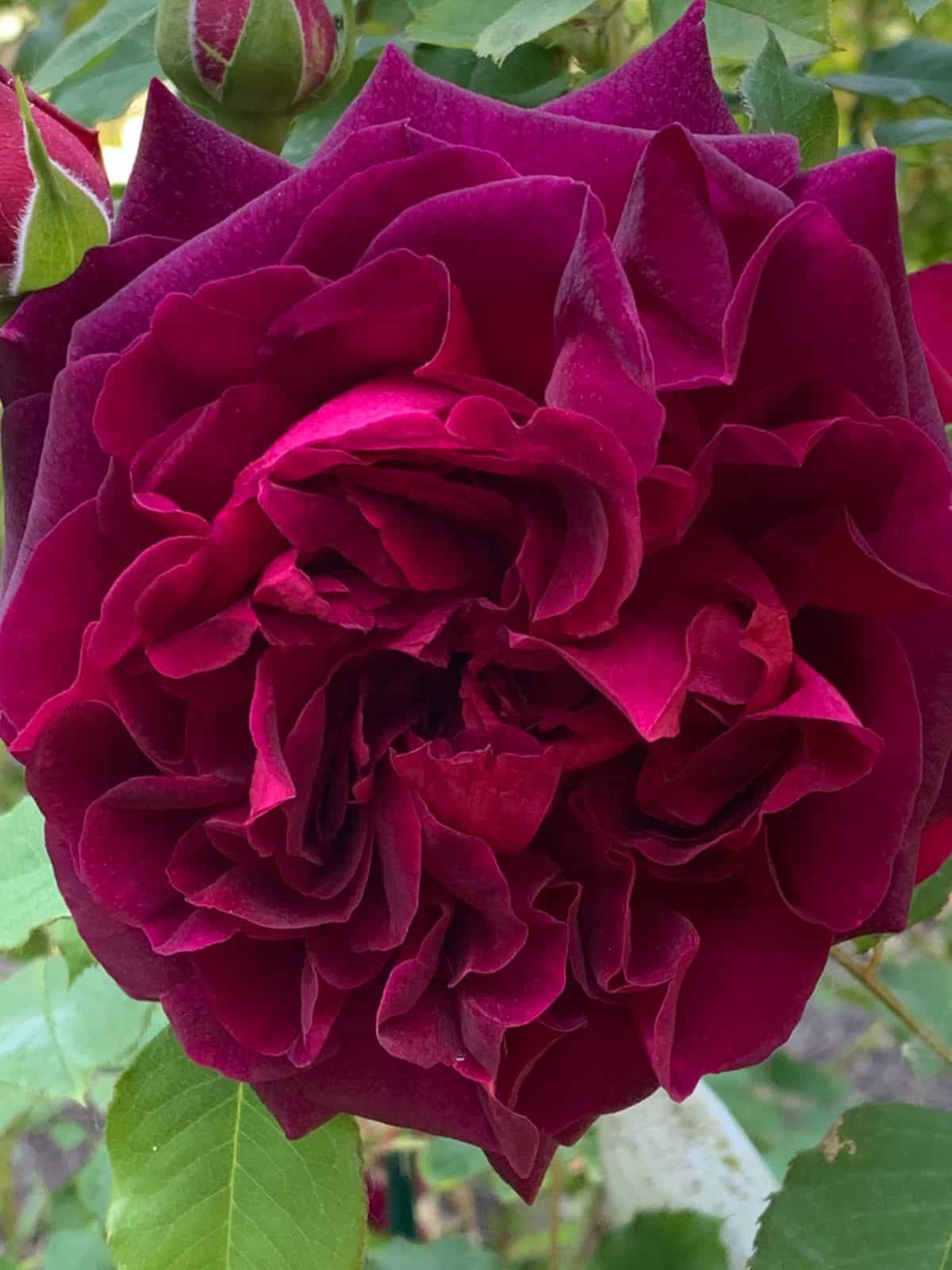
Sweet Jane
Marie Pavie
Earth Song
Sombreuil
Lady of Shallot
Chevy Chase
Beverly

Home Run
Solero Vigorosa
Easter Basket
Gourmet Popcorn
Malvern Hills
Viking Queen
Seminole Wind
Golden Celebration
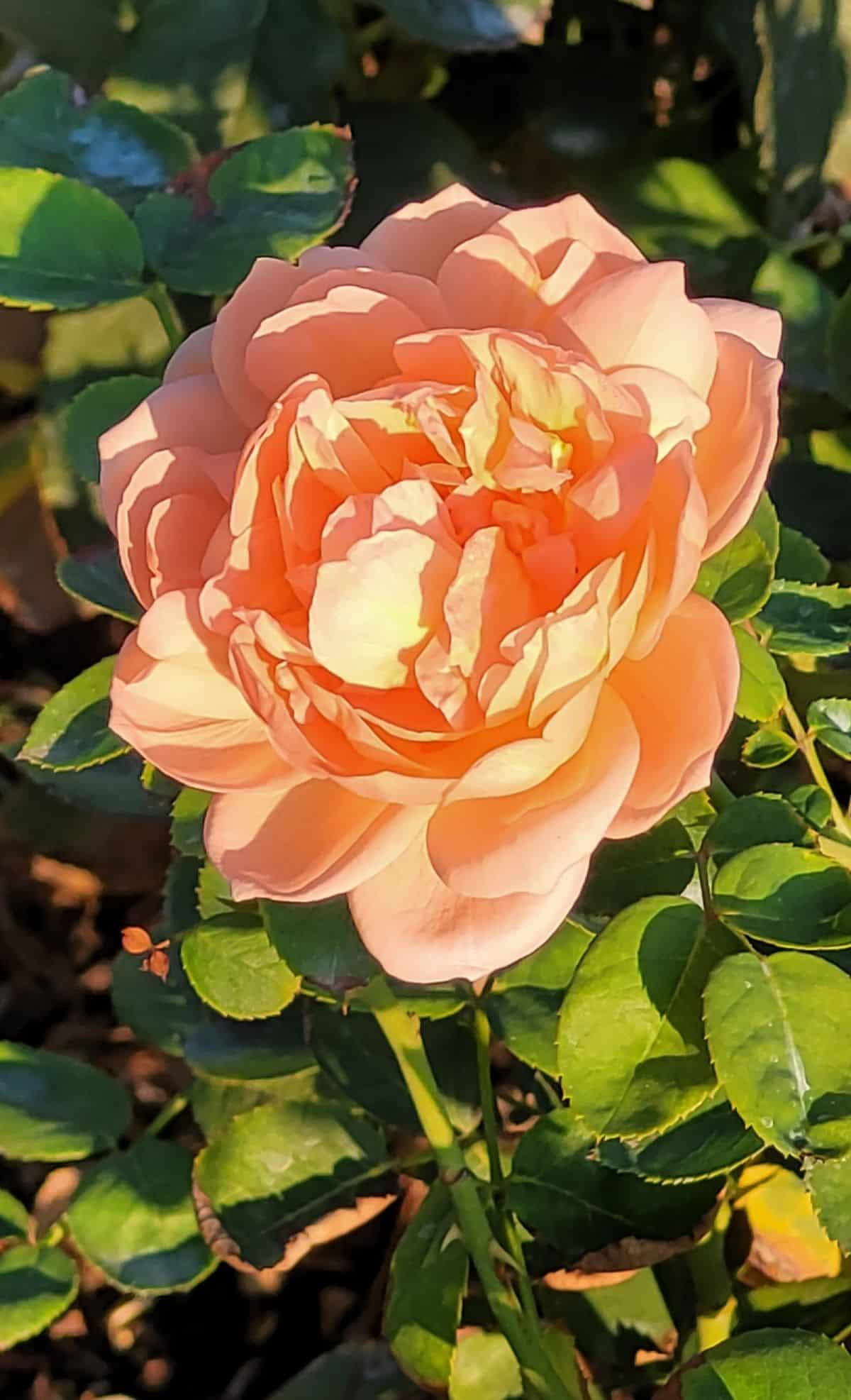
Madame Plantier
Pompon Blanc Parfait
Hot Cocoa
Living Easy
Belinda's Dream
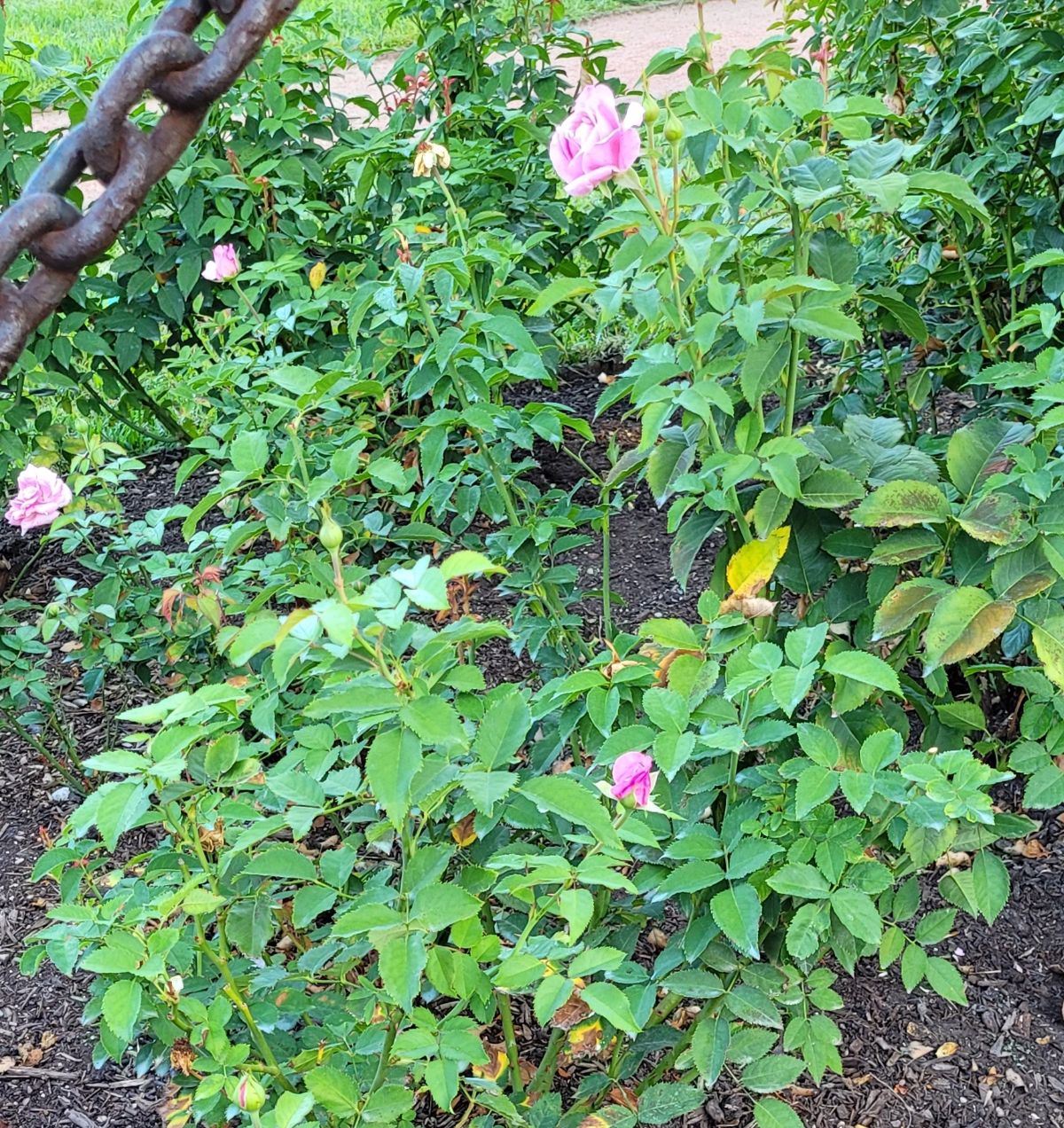
Ilse Krohn Superior
Red Eden
Madame Alfred Carrière
Pretty Jessica
Queen of Sweden

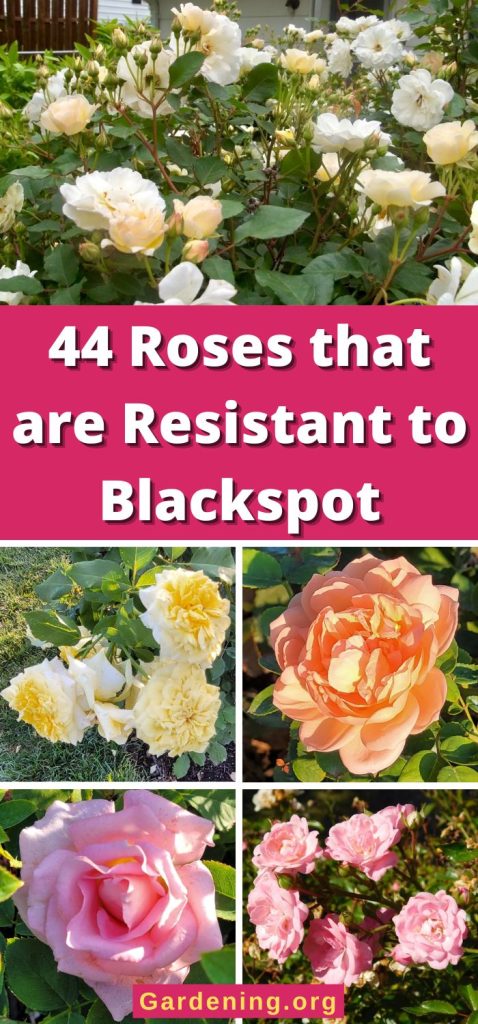
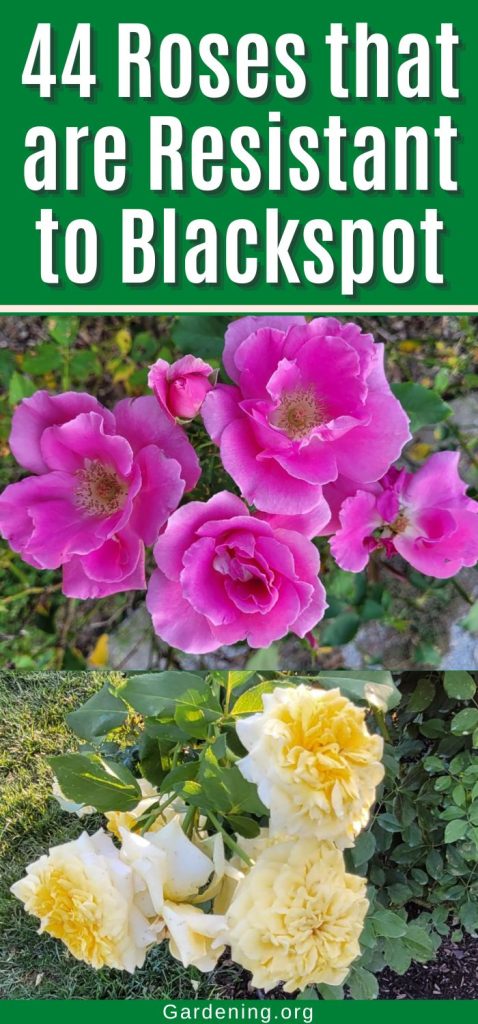
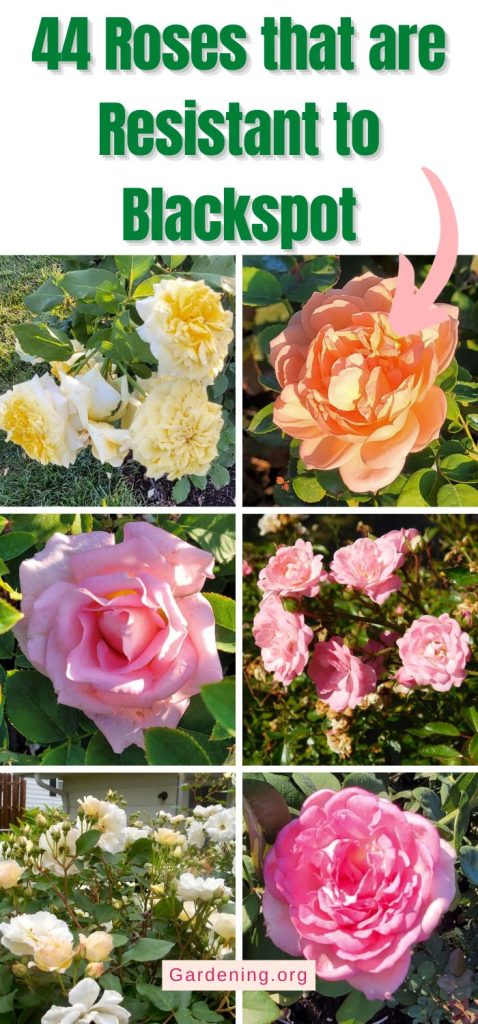
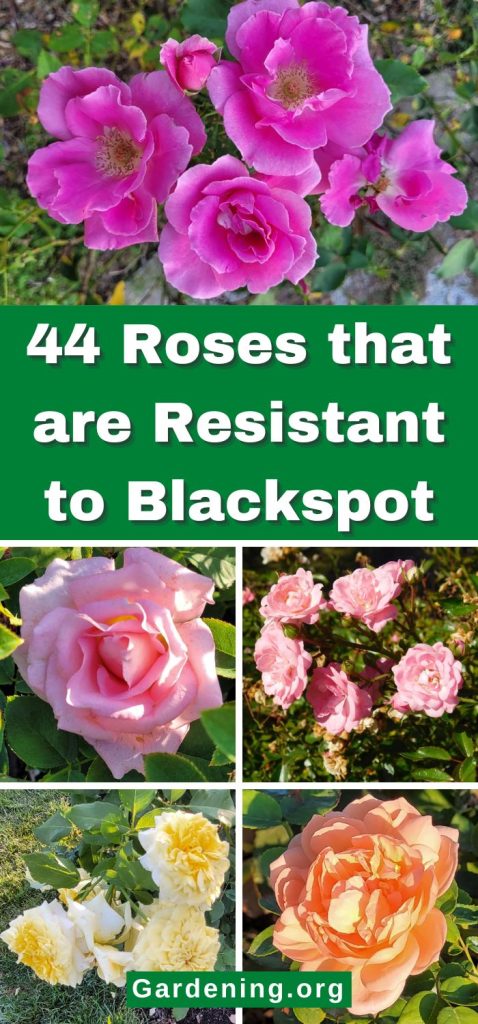

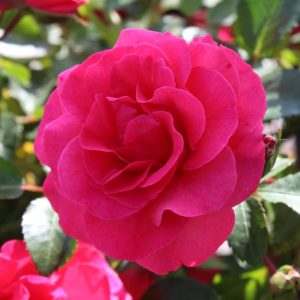
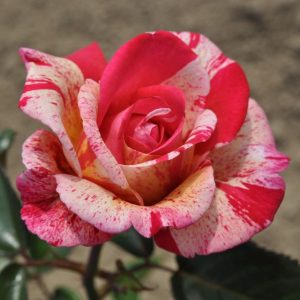

Mike Anders
Great article! I have been a rose gardener since I was 10 years old, so some 47 years, first in my native Puget Sound region of the Pacific NW, but for the past 34 years in the Gulf South. These are two extremely different growing regions.
I am personally familiar with many of the varieties you listed and found myseslf nodding in agreement most of the way.
One cavaet: In many articles on rose deisease resistance, it does not get acknowledged enough that any rose variety can act quite differently depending on the regional growing conditions, and even micro-climate variance.
For the past 7 years, I have grown roses free of chemical sprays and artificial fertilizers. That has meant, I let go some of my favorite mid-20th Century modern varieties and replaced them with impressively disease resistant varieties. Most are quite recent. As impressive as Knockout roses are for health, there are some equally bullet-proof varieties with more impressive form, size, and fragrane. Wedding Bells! Dark Desire, Francis Meilland, Grande Amore, Belinda's Dream, Plum Perfect, and Sweet Spirit, just to name a few.
Kordes breeding program out of Germany is SUPERB, as is the "True" rose series, and Brindabella series.
I would like to see more disclosure on WHERE the rose reviewers gathered their rose growing experience.
This is a great list, from my vantage point, but I am thinking like a Southern gardener. Best strategy is to use lists like this as starting points, but also check with local rose societies and Ag extensions where available.
None of these is the final word. Two bushes of the same variety, grown side by side, might perform differently. Soil, drainage, sun intensity and exposure, and weather extremes all impact performance. Also, the sheer number of commercially availabe varieties means some will fly under the radar, while others seem over-hyped.
Patience, perseverience, curiosity, and experimentation are aparts of the joy of rose growing.
Cheers!